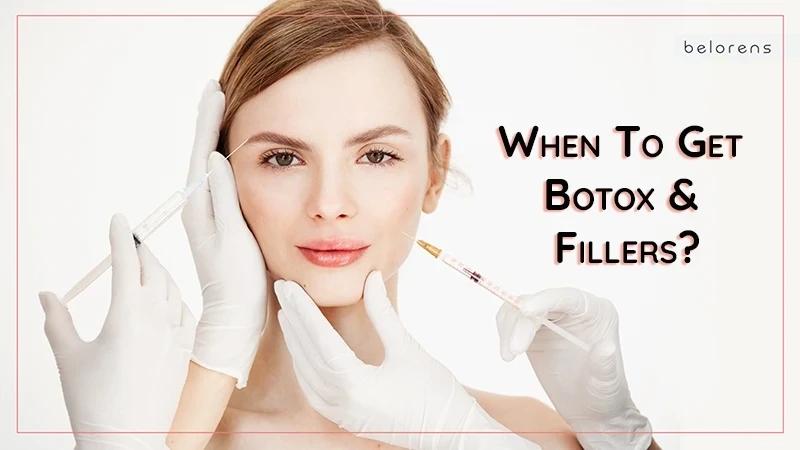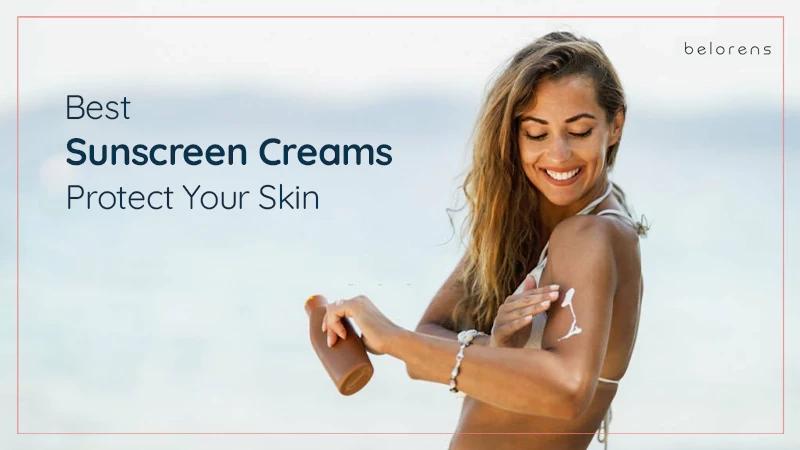Published on 30 Jan 2024 | Last updated on 26 May 2024
Acne Types, Causes, Treatment, and Emotional Well-Being
- ByMedical Content Team
- Medically Reviewed byDr. Sabine Kulhanek
Fact checked
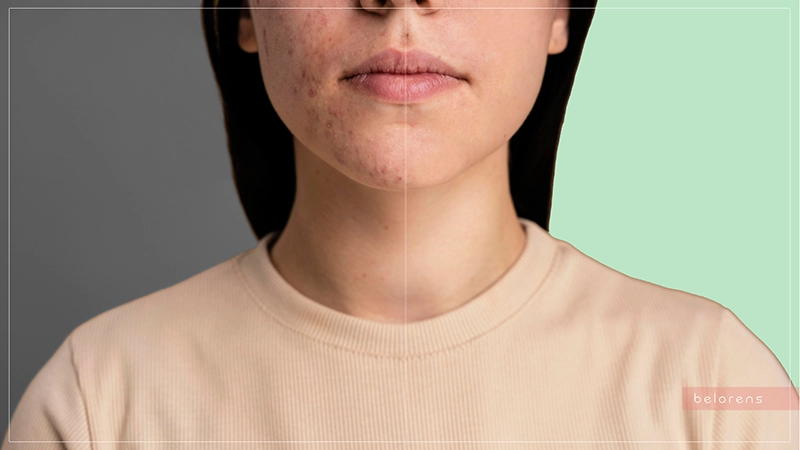
Breaking Down Acne Vulgaris
Contrary to the occasional pimple or zit, acne is a much more complex condition affecting individuals in diverse ways and to varying degrees. Acne vulgaris represents the most frequent of the three main forms of acne, with a range of specific acne lesions under its banner. The formation of acne vulgaris is a process, beginning when hair follicles become clogged due to an accumulation of excess sebum (natural body oils), bacteria, and dead skin cells. This clogging results in what is known as a comedo or clogged pore.
The Complexity of Acne Conditions
Acne vulgaris is just one amongst multiple acne conditions, including the likes of acne fulminans and acne mechanica. The term "acne" is often colloquially used to describe all sorts of skin bumps, but it's crucial to understand that acne represents an array of differing types of skin blemishes. Acne, an inflammatory skin condition, leads to the creation of pimples and spots. It is often a persistent condition stemming from several factors, such as blocked sebaceous (oil) glands and the accumulation of sebum and superficial debris (dead skin cells, bacteria, and dirt).
Unveiling the Different Varieties of Acne
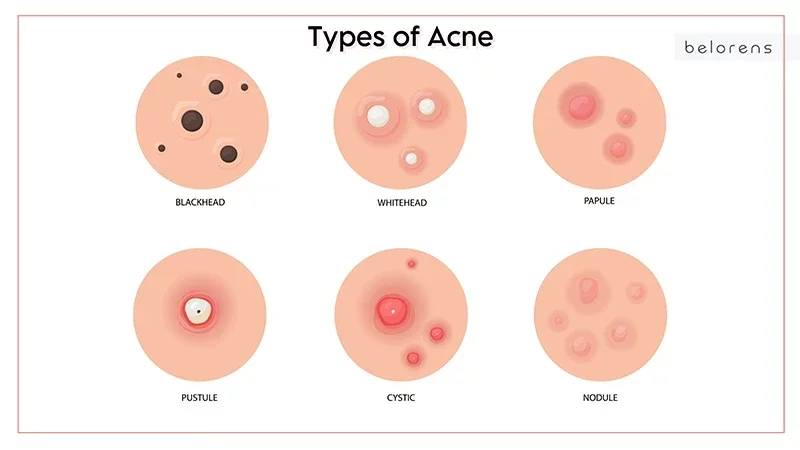
Acne manifests itself in various forms, each with its unique characteristics and causes. Here, we'll dive into the distinct types of acne, which include:
Pityrosporum Folliculitis (Fungal Acne)
Unlike typical acne which is caused by bacteria, Pityrosporum Folliculitis results from an overgrowth of yeast in your hair follicles. This type of acne tends to cause itchy and inflamed blemishes, often mistaken for a regular breakout.
Cystic Acne
Considered one of the more severe forms of acne, cystic acne gives rise to deep-set, pus-filled pimples and nodules. A notable characteristic of this type is its potential to leave behind scars, making it particularly problematic.
Hormonal Acne
This form of acne primarily affects adults with an excess production of sebum—a naturally occurring skin oil—that ends up blocking their pores. Hormonal acne often flares up in response to hormonal fluctuations, such as those occurring during a menstrual cycle.
Nodular Acne
As a severe manifestation of acne, nodular acne results in visible pimples on the skin's surface and tender nodules beneath the skin. These hard, painful lumps are created by blocked pores that have become increasingly irritated and filled with bacteria and sebum.
Understanding these different types of acne can pave the way for targeted and effective treatment strategies, promoting healthier skin and improved self-confidence.
Exploring Acne: Who is Most Susceptible?
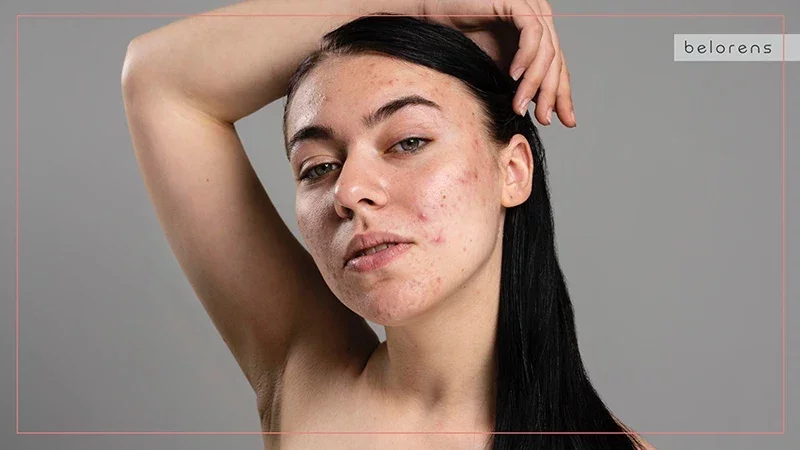
Acne is a universal skin condition that has the potential to affect everyone at some point in their life. While typically associated with the hormonal upheavals of adolescence, it certainly doesn't discriminate based on age and can occur at any stage in life, even during adulthood. It's interesting to note that adult acne tends to be more prevalent among women and people assigned female at birth.
Your susceptibility to acne may increase if you have a familial history of the condition, suggesting that genetics may play a role. In the United States alone, acne impacts a staggering 50 million individuals every year, highlighting its pervasive nature.
In the teenage population, over 80% are likely to grapple with recurring acne breakouts. However, as people mature into adulthood, this figure reduces to less than 10%. Despite the declining trend with age, it's essential to acknowledge that adult acne can, and does, affect a significant number of people.
The root cause of acne is clogged pores, making it a common occurrence amongst teenagers and young adults who often struggle with hormonal imbalances. However, various factors can prompt acne's onset during adulthood as well, underscoring its unpredictable nature. In understanding acne's widespread prevalence, we become better equipped to approach its treatment and management.
Demystifying the Prevalence of Acne
Acne is incredibly common, affecting millions of people worldwide. Its prevalence extends far beyond teenage years, with adult acne becoming increasingly prevalent in recent years. This skin condition can have a significant impact on an individual's self-esteem and quality of life, underscoring the importance of understanding and addressing it.
Mapping Acne: Most Affected Areas
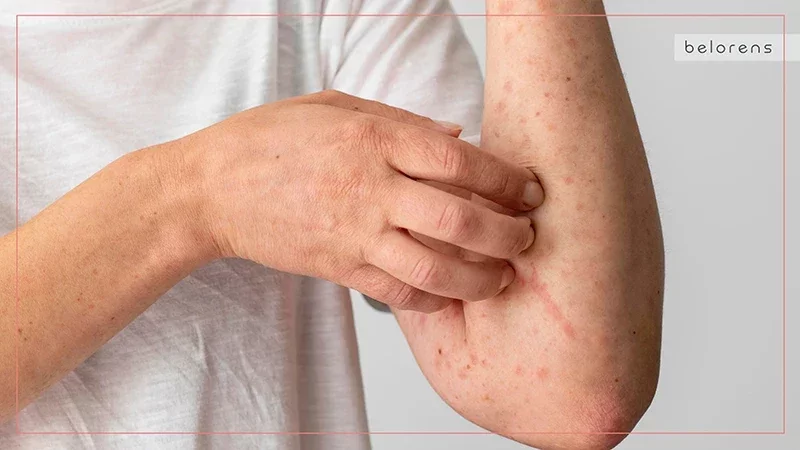
While acne may seem like a condition strictly limited to your face, the truth is, it can make its appearance on various parts of your body. The most frequent hotspots for acne are regions with a higher density of oil glands. Let's delve into the most common locations you might encounter acne:
1. Face:
The face is arguably the most frequently affected area, with specific emphasis on the forehead, owing to a high concentration of oil glands.
2. Chest:
The chest is another common site, which often isn't as visible but can be just as bothersome.
3. Shoulders:
These often oil-rich regions can also be a common ground for acne eruptions.
4. Upper back:
Much like the shoulders, the upper back can be a regular spot for breakouts.
The reason these areas are most prone to acne is the abundant presence of pilosebaceous units (a structure consisting of a hair follicle and a sebaceous gland). Remember, acne isn't limited to these regions alone. It can sprout anywhere on your body, including the neck, buttocks, and other parts of your body with numerous oil glands. Understanding where you're most likely to develop acne can be the first step to effective treatment and prevention
Unveiling Acne: Differentiating Between Inflammatory and Non-Inflammatory Types
Acne can be classified into two primary categories: inflammatory and non-inflammatory. These classifications are based on the appearance and behavior of the acne lesions. Understanding the differences is crucial in determining appropriate treatment approaches. Let's explore these categories:
Inflammatory Acne:
Papules, Pustules, Nodules, and Cysts: Inflammatory acne involves more severe lesions that result from the body's immune response to the presence of bacteria, sebum, and dead skin cells within the pores.
• Papules: The Small Inflamed Spots
Papules, the inflamed comedones, surface as small, discolored bumps, usually ranging from red to purple or darker than your natural skin tone. These may be sensitive to the touch, and caution should be exercised not to pick or squeeze them as this could worsen the inflammation and potentially lead to scarring. Formed due to a blocked pore or hair follicle infected with bacteria, they are a result of your immune system combating the infection with white blood cells. The inflammatory response gives birth to clusters of these red, inflamed pimples, which can be painful and sensitive.
• Pustules: White or Yellow Pus-Filled Bumps
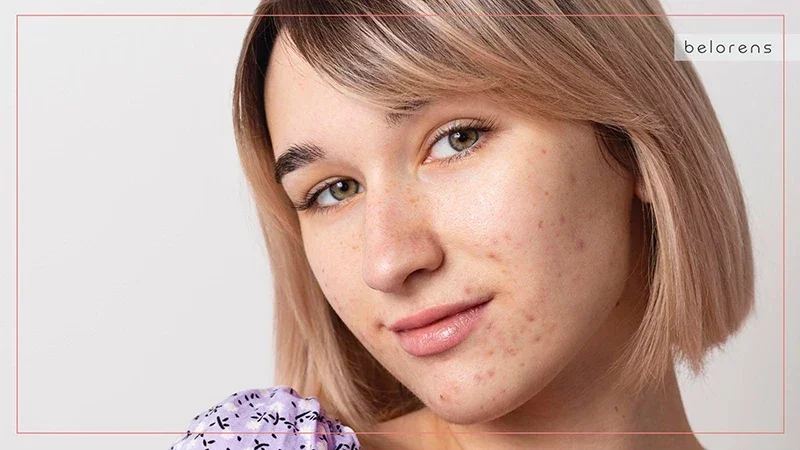
Pustules are like the evolved forms of papules, boasting an inflamed lesion filled with pus. They are characterized by a red ring encircling a white or yellow bump filled with pus. Despite the urge, it's crucial not to pop these pustules, as it could potentially lead to acne scarring. Pustules occur as your immune system's inflammatory response leads to the formation of pus, consisting of oil, dead skin cells, and bacteria.
• Nodules: Deep-Seated and Painful Lumps
Nodules are a serious type of acne lesion. They appear as large, inflamed bumps deep within the skin, often painful and hard to the touch. These blemishes are caused when a hair follicle is damaged, and the sebum, debris, and bacteria infiltrate deeper skin layers, resulting in a significant inflammatory response. A dermatologist's intervention is typically recommended for treating nodules due to the potential for permanent scarring.
• Cysts: Painful, Fluid-Filled Bumps Beneath the Skin
Cysts are a severe form of acne, akin to boils. They form as large, pus-filled lesions beneath the skin's surface and can be painful. Like nodules, they develop when bacteria and oil spread into the skin due to a damaged hair follicle. Cysts should be treated by a dermatologist, as they can lead to scarring. They are filled with pus and may even contain blood, leading to acne scars. Proper medical intervention can prevent the likelihood of scarring.
The Hierarchy of Acne: Classifying Severity Levels
Navigating through the domain of acne vulgaris entails understanding its degrees of severity. Acne can manifest in various intensities, which is divided into three primary classifications: mild, moderate, and severe. Let's delve into these categories and their unique characteristics.
Mild Acne: Just Scratching the Surface
Mild acne is identified by its limited number of acne lesions. If you're grappling with fewer than 20 comedones (whiteheads or blackheads) or fewer than 15 inflamed bumps, totaling less than 30 lesions overall, you are dealing with mild acne. Treatment typically involves over-the-counter topical medications. While results may not be instant, you can expect a significant improvement over a period of eight weeks.
Moderate Acne: The Middle Ground
Moderate acne marks its presence with an increase in lesions. It's recognized by the existence of 20 to 100 comedones, and between 15 to 50 inflamed lesions. Moderate acne tends to be more conspicuous and could potentially leave behind dark spots and scars. A dermatologist's advice is sought for moderate acne, usually resulting in a prescription for stronger medications. Patience is key as it might take several weeks to see noticeable improvements, and your acne might initially seem to worsen before it starts to get better.
Severe Acne: Deep-Rooted Concerns
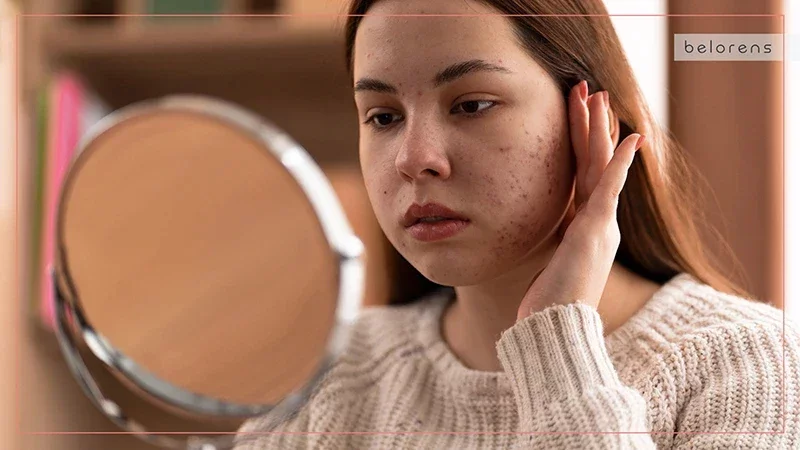
The realm of severe acne goes beyond surface-level comedones and lesions. A diagnosis of severe acne considers the existence of cystic lesions and other criteria such as: the presence of 5 or more pseudocysts, over 100 comedones, or more than 50 inflammatory lesions. Severe acne, also known as nodulocystic acne, poses the most challenges to treat and frequently results in scarring. This extreme form of acne can cause multiple inflamed cysts and nodules, leading to deep red or purple skin lesions. Urgent treatment from a dermatologist is essential to minimize scarring. In certain situations, a dermatologist might recommend corticosteroid injections directly into the nodules and cysts to reduce their size and alleviate painful inflammation.
Acne severity grades serve as a roadmap to understand the complexity of this skin condition better. It guides patients and dermatologists alike to choose the right treatment strategy, thus ensuring effective management of acne. It's important to remember that no matter the severity, every type of acne can be managed with the right care, patience, and medical intervention
Underpinning Acne: Causes and Contributing Factors
Acne, a universal yet complex skin condition, is the result of a combination of factors involving clogged hair follicles or pores. These follicles, which are tiny tunnels leading to a hair strand, are often crammed with an excessive buildup of materials, leading to blockages. But what causes these clogs in our pores? Let's examine the main culprits.
Sebum & Sebaceous Glands: A Sticky Situation
Sebum, an oily substance secreted by the sebaceous glands, works as a protective barrier for our skin. However, when overproduced, sebum can trap dirt and debris in the pores, providing the perfect breeding ground for bacteria to multiply. This leads to pus-filled bumps, inciting an immune response that results in inflammation and acne breakouts.
Bacteria & Dead Skin Cells: Unwanted Tenants
Although small amounts of bacteria naturally inhabit our skin, an excessive population can cause pores to clog. Similarly, as your skin cells routinely shed to make way for new cells, the discarded ones can sometimes get trapped in the hair follicles. When these substances plug up your hair follicle, they create a pimple, triggering inflammation noticeable as pain, swelling, and discoloration around the pimple.
The Acne Equation: How It All Adds Up
Understanding acne starts with appreciating how our skin functions. At the heart of it, acne is simply the result of infected or inflamed sebaceous glands in the skin. However, the journey from inflamed glands to visible blemishes involves multiple steps.
Our pores are connected to oil glands lying just beneath the skin, which produce sebum to keep our skin moisturized. However, when sebum production spirals out of control, it can lead to acne. As the excess oil is pushed through the follicle, it can create a plug if it adheres to dead skin cells or bacteria, resulting in a pimple.
Combating Acne: Treatment Strategies and Approaches
Addressing acne requires a comprehensive approach tailored to an individual's specific condition, severity, and unique circumstances. While there is no one-size-fits-all solution, a combination of self-care practices, over-the-counter products, prescription medications, and professional interventions can effectively manage and treat acne. Some common treatment strategies include:
Proper Skincare Routine:
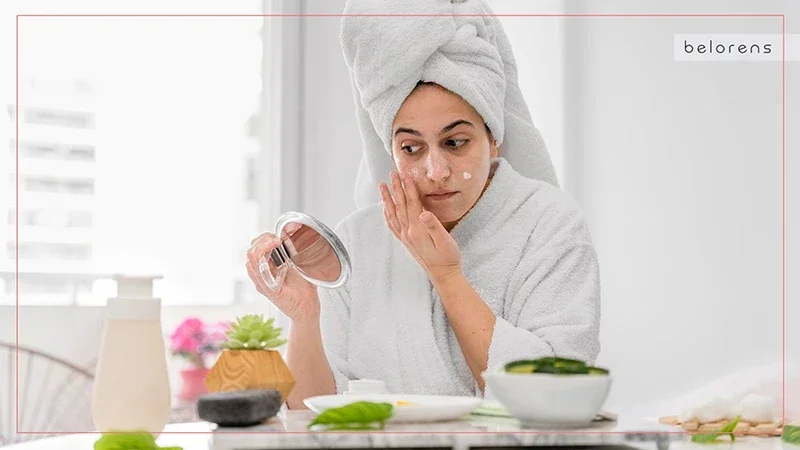
Establishing a consistent skincare routine involving gentle cleansing, exfoliation, and moisturization can help manage acne. Avoiding harsh products, excessive scrubbing, and touching the face can also prevent further irritation.
Topical Treatments:
Over-the-counter or prescription topical treatments, such as benzoyl peroxide, salicylic acid, retinoids, and antibiotics, can help reduce acne-causing bacteria, unclog pores, and promote skin cell turnover.
Oral Medications:
In cases of moderate to severe acne, oral medications like antibiotics, hormonal therapies (e.g., birth control pills), or isotretinoin (commonly known as Accutane) may be prescribed by a healthcare professional.
Professional Procedures:
Dermatologists can provide various in-office procedures to treat acne, including chemical peels, laser therapy, extraction of comedones, and intralesional corticosteroid injections for severe cysts and nodules.
Lifestyle Modifications:
Making healthy lifestyle choices, such as maintaining a balanced diet, managing stress levels, exercising regularly, and getting adequate sleep, can contribute to overall skin health.
The Emotional Toll of Acne: Impacting Self-Esteem and Well-Being
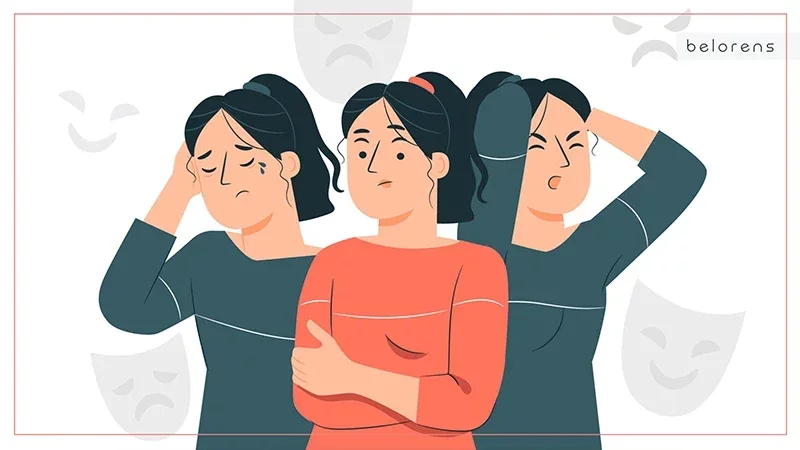
Understanding the Emotional Effects of Acne
Acne is not just a physical condition; it can have a profound impact on a person's emotional well-being. Dealing with acne can lead to a range of emotional effects, including diminished self-esteem, decreased self-confidence, and negative body image. The visible presence of acne breakouts can make individuals feel self-conscious and cause them to withdraw from social
interactions. Understanding the emotional effects of acne is essential in addressing the holistic impact it has on an individual's overall well-being.
The Impact on Self-Esteem and Well-Being
Acne can significantly affect an individual's self-esteem and overall well-being. For adolescents who are navigating the challenges of adolescence and self-discovery, the presence of acne can be particularly distressing. It can lead to feelings of embarrassment, shame, and low self-worth, as physical appearance begins to influence their self-esteem. Even the best teen acne treatments may not fully protect their self-image from the scars and breakouts caused by acne. However, it's important to remember that acne can impact individuals of all ages, and adults dealing with acne may also experience significant emotional distress and social stress.
Managing the Emotional Effects of Acne
Managing the emotional effects of acne requires a comprehensive approach that addresses both the physical and emotional aspects of the condition. Seeking effective treatment for acne is crucial in reducing physical discomfort and pain, as well as alleviating the negative psychosocial effects. This can involve a combination of over-the-counter or prescription medications, lifestyle modifications, and skincare routines tailored to the individual's skin type. Additionally, practicing self-care, maintaining a positive mindset, and seeking support from loved ones or professional counselors can play a vital role in managing the emotional toll of acne.
Tailoring Treatment Strategies for Your Skin Type
Understanding your skin type is an important first step in developing an effective treatment strategy for acne. Different skin types may require specific approaches and products to address acne breakouts. By pinpointing the specific types of acne you're dealing with, such as papules, pustules, nodules, or cysts, you can select targeted treatments that are tailored to your skin type. This personalized approach can help clear your complexion, prevent future breakouts, and ultimately contribute to improved emotional well-being.
Seeking Support for Emotional Well-Being
When acne flare-ups cause not only physical discomfort and pain but also negative emotional effects, seeking support for emotional well-being becomes crucial. It's important to reach out to friends, family, or support groups who can provide understanding, empathy, and encouragement. Additionally, professional counseling or therapy sessions can offer a safe space to explore and address the emotional challenges associated with acne. Therapists can help individuals develop
coping strategies, improve self-esteem, and navigate the emotional impact of acne on their daily lives.
Overcoming the Emotional Challenges of Acne
Overcoming the emotional challenges of acne requires a proactive and holistic approach. This involves embracing self-care practices that promote overall well-being, such as maintaining a balanced diet, engaging in regular exercise, getting enough sleep, and managing stress levels. Developing a positive mindset, practicing self-compassion, and focusing on activities and hobbies that bring joy and fulfillment can also aid in overcoming the emotional toll of acne. Remember that acne does not define your worth, and with time and proper care, you can regain your confidence and emotional well-being.
Also Read: Start Your Day Right: A Healthy Breakfast and Effective Diet for Weight Loss and Fitness
Embracing Self-Care and Self-Compassion

Self-care and self-compassion play crucial roles in navigating the emotional challenges of acne. It's important to prioritize self-care activities that promote relaxation, stress reduction, and self-esteem. This can include pampering your skin with gentle skincare routines, engaging in activities that bring you joy and boost your confidence, and practicing mindfulness or meditation to foster self-acceptance and self-compassion.
Embracing self-care and self-compassion can help individuals develop a positive relationship with their skin and improve their emotional well-being.
Resources for Supporting Emotional Well-Being
Various resources are available to support individuals in managing the emotional toll of acne. Online communities and forums provide platforms for connecting with others who are going through similar experiences, offering support, sharing advice, and providing a sense of belonging. Additionally, dermatologists and mental health professionals can offer specialized guidance and treatment options tailored to address both the physical and emotional aspects of acne. Exploring these resources can be invaluable in finding the support needed to navigate the emotional challenges of acne.
Reclaiming Self-Esteem and Well-Being in the Face of Acne
Reclaiming self-esteem and well-being in the face of acne is an empowering journey that involves both self-care practices and seeking support. By understanding and addressing the emotional effects of acne, tailoring treatment strategies to your skin type, and embracing self-compassion and self-care, you can regain confidence and improve your overall well-being. Remember that you are not alone in this struggle, and with the right approach and support, it is possible to overcome the emotional toll of acne and embrace a positive self-image.
Also Read: Why Is My Face Red? Possible Causes and Treatments
Conclusion: A Holistic Approach to Acne Management
Acne is far more than just a few pimples on the face. It is a complex skin condition with multiple forms, causes, and impacts on individuals' lives. Understanding the different types, severity levels, affected areas, and treatment strategies empowers individuals to take control of their acne management. Remember, seeking professional advice from a dermatologist is crucial for a comprehensive and tailored approach to combat acne and achieve healthier, clearer skin. With the right knowledge and care, you can navigate the complexities of acne and regain your confidence.

